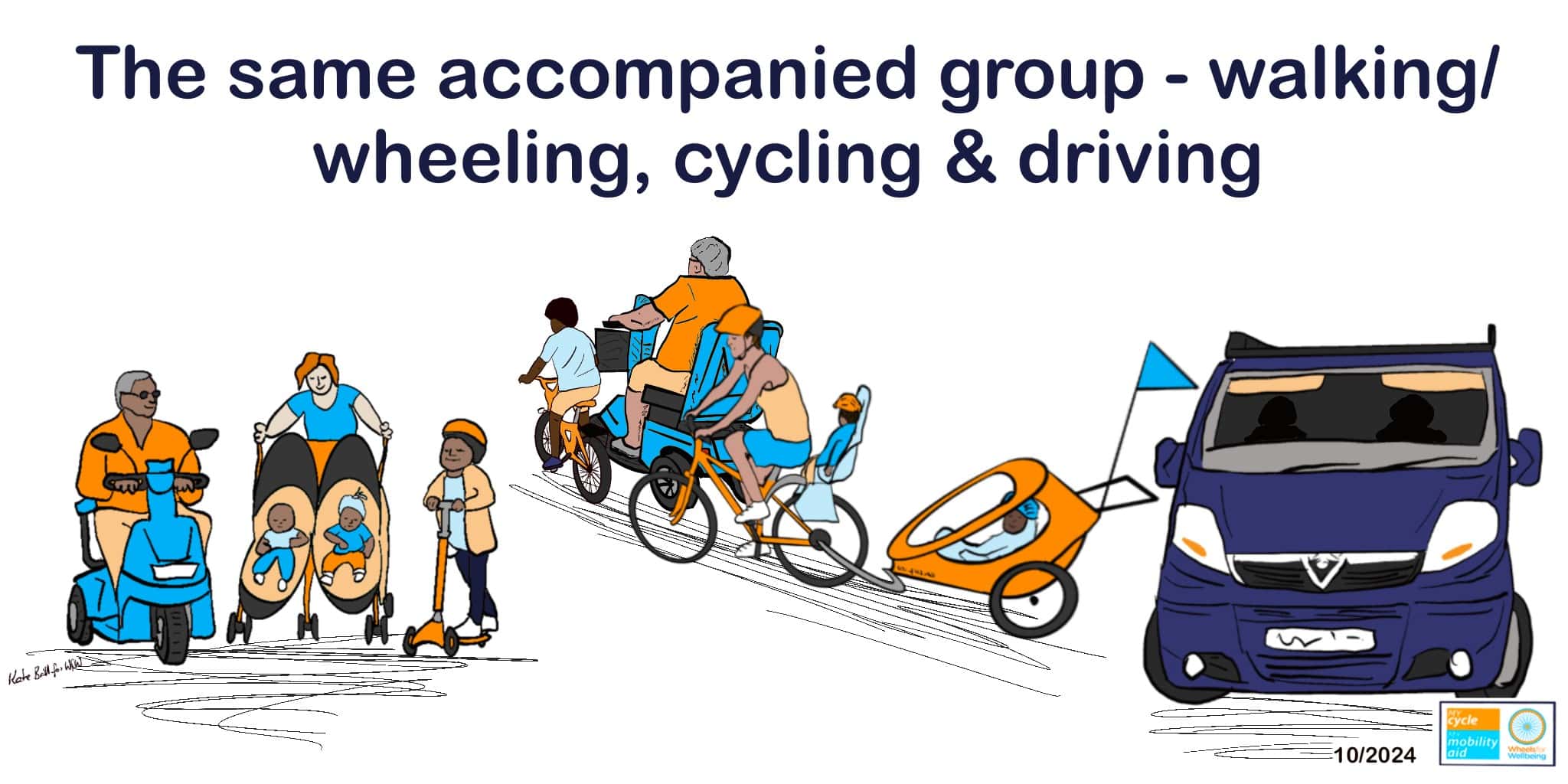Download this guide as a Word document
1 What is an accompanied group?
Accompanied groups are two or more people making a trip together, where the group cannot safely split up.
Accompanied groups need to move as a single unit, including over crossing points, through complex or busy spaces and on public transport vehicles.
Accompanied groups are unable to split up because one or more people in the group needs assistance or support from another person or people within the group. This includes groups with members providing mutual support to each other such that the whole group is able to complete a journey that any single member of the group could not.
Accompanied groups walking/wheeling and cycling are disproportionately likely to include women, children, older people, Disabled people and people from minoritised ethnic groups, as well as people experiencing socioeconomic disadvantage. This is due to societal factors such as distribution of paid and unpaid caring, opportunity to drive journeys, opportunity to be driven for journeys, as well as the safety of active travel routes and individual factors which combine to determine a person’s assistance needs for each journey.
All walking/wheeling, cycling, public transport and highways infrastructure project design and management must cater for accompanied groups, in order to achieve good levels of accessibility and to meet the requirements of the Equality Act, including the Public Sector Equality Duty.
2 Cycling accompanied groups:
Where one or more adults or children are in control of their own cycle, while still needing supervision or support from an adjacent and/or following cyclist.
The supported and/or supporting cyclist(s) will often be riding a non-standard cycle type. Cycling accompanied groups include parents with independently-riding children and Disabled and/or inexperienced adults with an assistant, who may also be a family member or friend.
3 Walking/wheeling accompanied groups:
Walking/wheeling accompanied groups will include groups with one or more Disabled, older or younger people.
An example of a walking/wheeling accompanied group could be a parent or carer with one or more children or adults, including with one or more children assisting older, younger or Disabled companions (including assisting the supervising adult) and with one or more of the group, including the supervising adult(s), using aids of any kind, such as assistance dogs, mobility aids and pushchairs.

